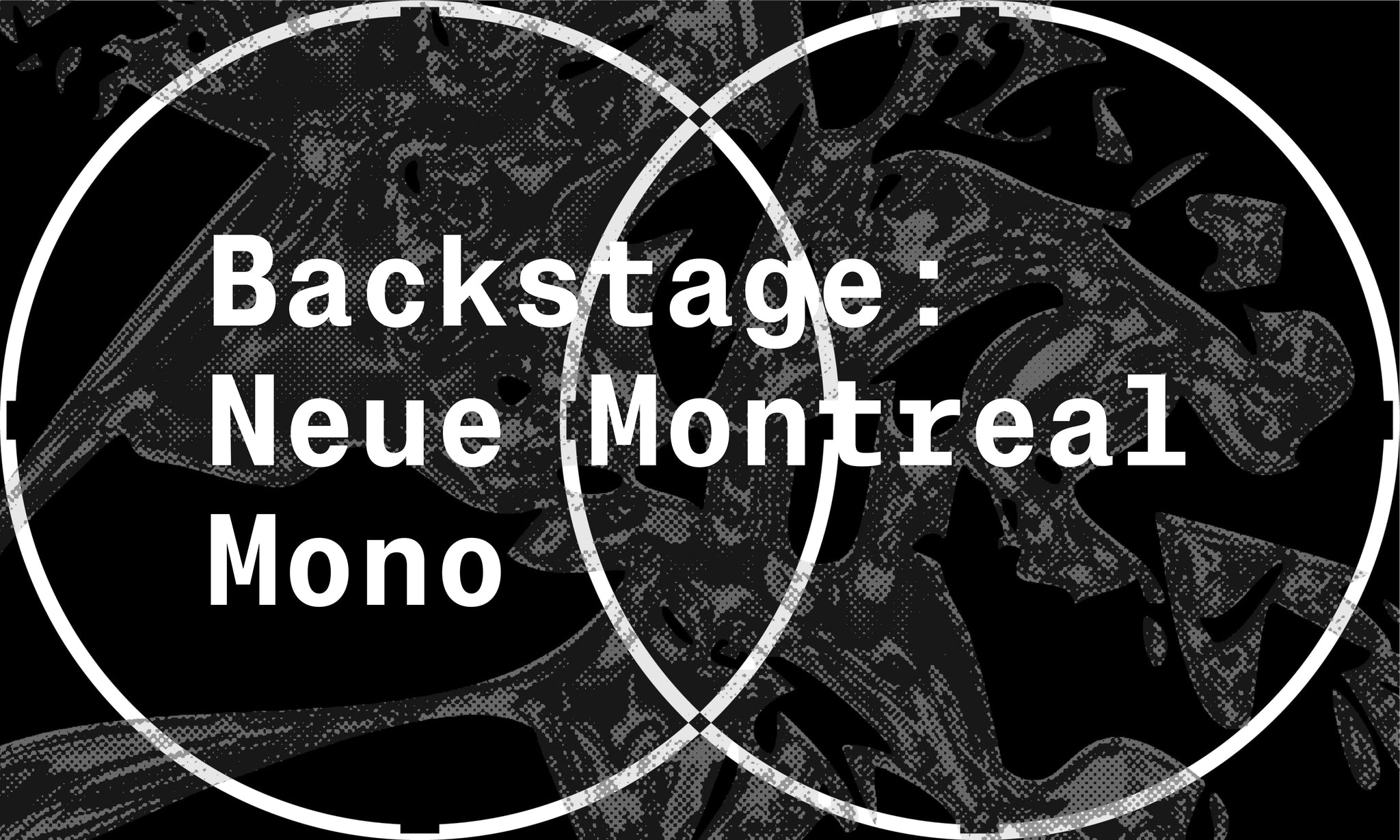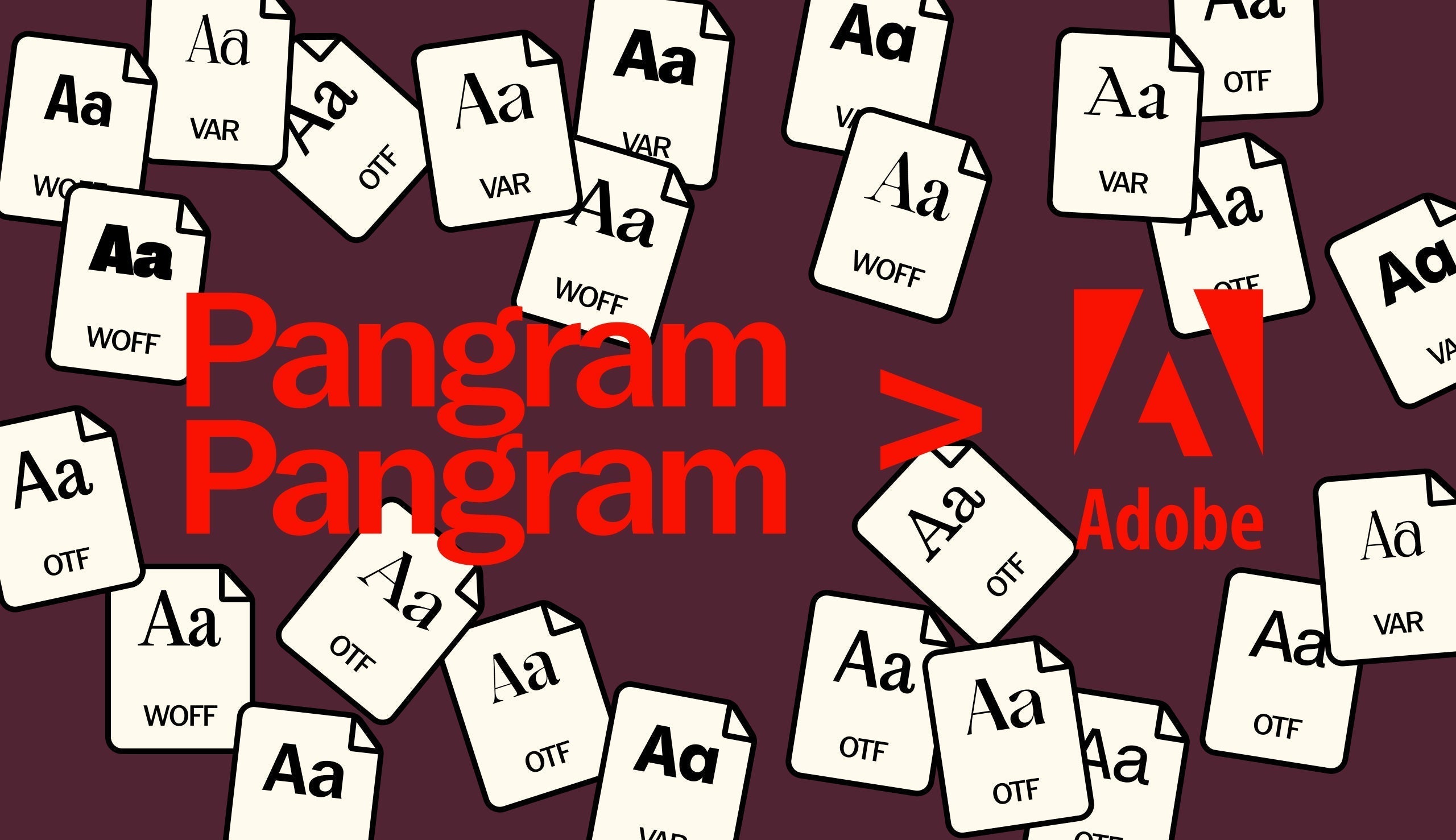Welcome back to another edition of our Backstage series, where we delve into the minds and motivations of the brilliant designers behind Pangram Pangram’s remarkable typefaces. In this instalment, we’re excited to sit down with Amélie Bonet, the creative force behind the exceptional Neue Montreal Mono.
Seamlessly marrying style with functionality, Neue Montreal Mono, an offspring of Neue Montreal, was a much sought-after monospace, following the wide acclaim, usage and reputation of its Grotesk predecessor. A mastery of form and function, the typeface’s versatility was a crucial focus, evident in its 14 styles, including the intriguing ‘Button-mode’, which you better believe we ask a thing or two about! Amélie likewise sheds light on how these features add an extra, exciting and, importantly, playful dimension to Pangram Pangram’s offering, and the creative expression afforded to the designers who use it.
In our conversation with Amélie, we unravel the inspiration behind this highly desired creation, exploring the intricate design philosophy that led to its development whilst diving into the meticulous process of its crafting – drawing from her experiences and the challenges she faced in its design. We also glimpse her favourite characters within Neue Montreal Mono and the dream scenarios where she envisions its impactful use. So, without further ado, welcome to our latest Backstage chat!
Neue Montreal Mono is a wonderfully unique blend of style and functionality. What inspired its creation?
There is always a need for a good monospace font.
Neue Montreal is a successful typeface, and it just seems logical to expand it to include a monospace variant. A new member is joining the family. Neue Montreal Mono is indeed the lovechild of style and functionality, born out of a deeper need for a typeface that is both easy on the eyes and practically useful.


In the process of developing Neue Montreal Mono, did you draw inspiration from any specific references or experiences?
When creating Neue Montreal Mono, I drew inspiration from various sources, including contemporary design trends and my own experiences. My goal was to create a typeface that looks sleek even within a fixed width.
Neue Montreal Mono is my second monospace design. The first one I designed is Ubuntu Monospace. This design is unique due to its origin. It was decided from the beginning that a community of happy Ubuntu users would follow the design development of Ubuntu Monospace and have a chance to influence some design decisions. The exchange with intensive users of monospace fonts was extremely beneficial for the project, guiding the design direction. All this knowledge was, of course, incorporated into Neue Montreal Mono.
Can you share some insights into the design philosophy behind Neue Montreal Mono? How did you approach creating a monospace typeface with a clean, modern aesthetic?
When creating a monospace, shape/space are being added/deleted. The philosophy behind the design of Neue Montreal Mono was to maintain the cleanliness and modernity of the proportional Neue Montreal while adapting to the technical requirements of a monospace font. Throughout the design process, careful attention was given to readability and legibility.
What motivated the decision to introduce special features like ‘Button-mode,’ and how do you see designers incorporating this into their projects?
This idea emerged during a conversation with Francesca (Bolognini) about the design. We both agreed that incorporating such a feature into Neue Montreal Mono would elevate the typeface, making it even more fun to work with. Our wish is to offer designers additional tools for creative play.
The Button-mode feature makes perfect sense in a monospace environment. Monospace letters are already confined in an invisible box, and this feature simply makes that box visible.


Neue Montreal Mono offers 14 styles, including italics and multilingual support. How did you ensure the typeface’s versatility across different design and language contexts?
Ensuring versatility across styles and writing systems was indeed a top priority. Maintaining consistency across styles was an essential aspect throughout the entire design journey. Another challenge was achieving optically perfect slants in the seven italic styles.
The design underwent extensive testing and refinement to ensure aesthetic coherence. It was also crucial not to stray too far aesthetically from the proportional design; after all, the monospace is its offspring.
Can you walk us through the creative process of designing Neue Montreal Mono? Were there any specific challenges or breakthrough moments?
The creative process involved iterative design, testing, and refinement. The challenge was to find the perfect balance of squeeze and expansion. The breakthrough moment occurred when width variations (along with weight refinements) seamlessly fell into place, resulting in a cohesive and unique typeface.


Given the varied applications of Neue Montreal Mono, are there specific projects or industries where you envision it making a significant impact?
Neue Montreal Mono is a versatile typeface with the potential to make a significant impact across various projects. Its clean aesthetic suits editorial design, branding, and digital interfaces. Neue Montreal Mono is the typeface you want for projects that need that extra touch of modern sophistication, especially if combined with its proportional counterpart.
Do you have any favourite characters or unique glyphs in Neue Montreal Mono that you’re particularly proud of? What’s the story behind them?
In many monospaced typefaces, I am drawn to the - j - lowercase. This letter looks so playful, resembling a little person lifting its arms up, almost like an emoji on its own. I like it too in Neue Montreal Mono.


If you could reimagine any contemporary typeface as a monospace version, which one would it be, and why?
It would be great to see more monospace designs pushing the boundaries of the fixed-width constraint while distancing themselves from the coding environment. Any contemporary typeface is eligible for a monospace mash-up. Going even further, I would be extremely happy to see more tabular designs developed for connected writing systems, such as Arabic or Devanagari.

In a dream scenario, where would you love to see Neue Montreal Mono being used? Any dream projects or collaborations you'd find particularly exciting?
I would love to see Neue Montreal Mono used in unexpected places. How fun it is to discover your own typeface where you least expect it! But I must admit, if I see Neue Montreal Mono used in cutting-edge editorial designs, I would be equally pleased..
What’s next for you in terms of type design? Any hints about future projects or areas you’re excited to explore?
Diving into new design challenges and projects is always exciting; I am right now working on a geometrical Devanagari design. I am very pleased to include different writing systems in my practice. Working with shapes I haven't grown up with, as well as those I have, proves to be extremely enriching.








